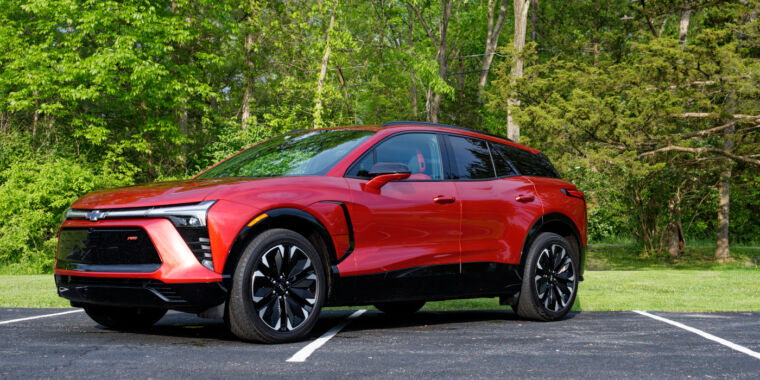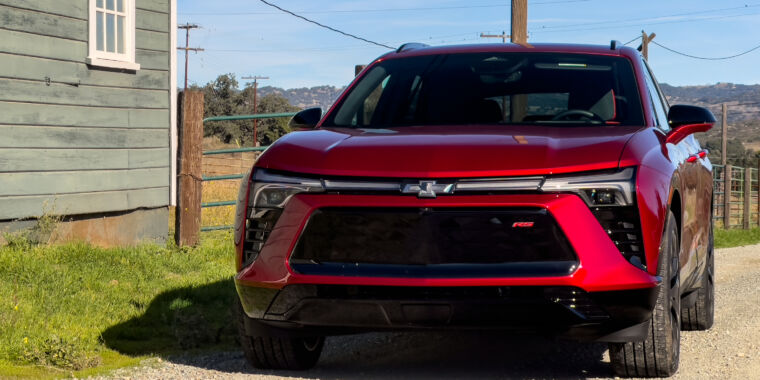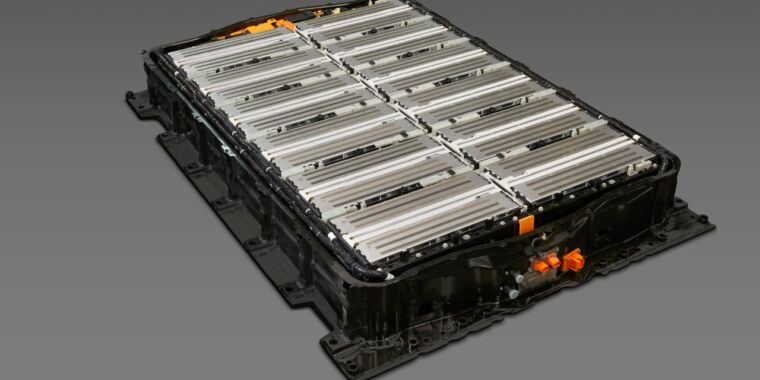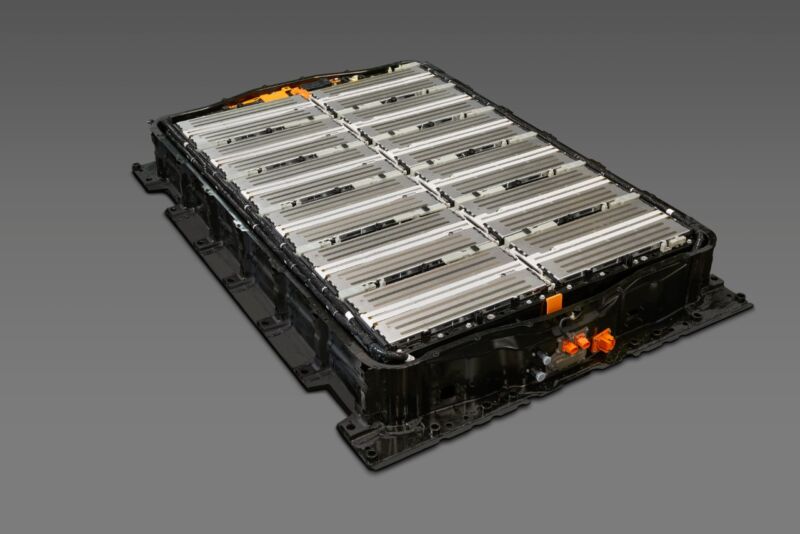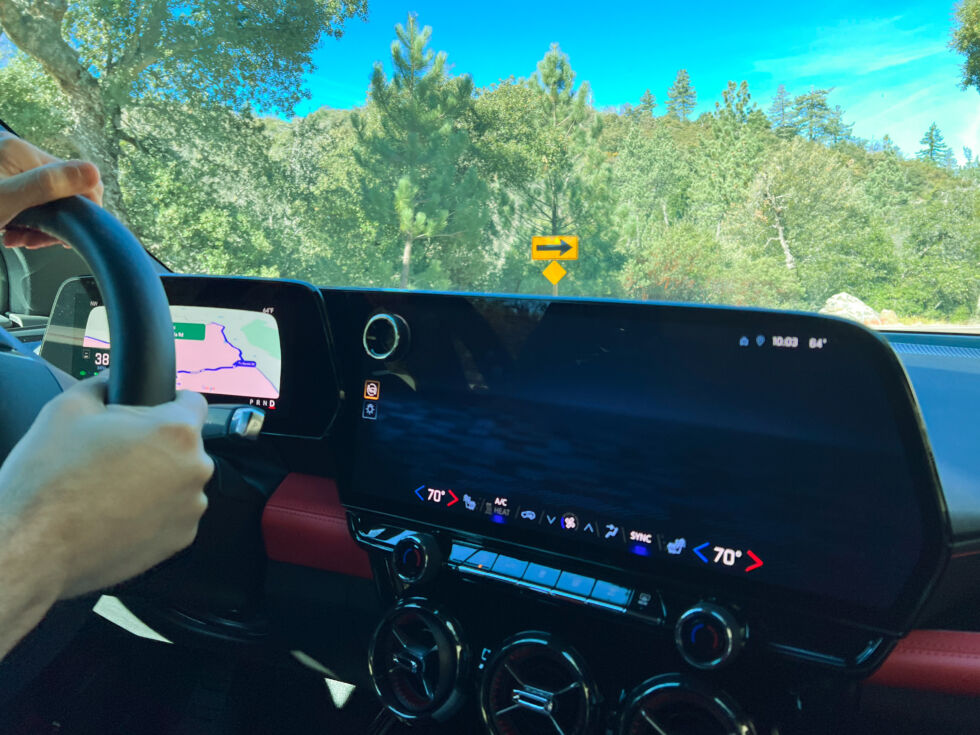A week with the Chevy Blazer EV shows things to love—but also painful flaws
take two —
The decision to drop Apple CarPlay was a mistake.
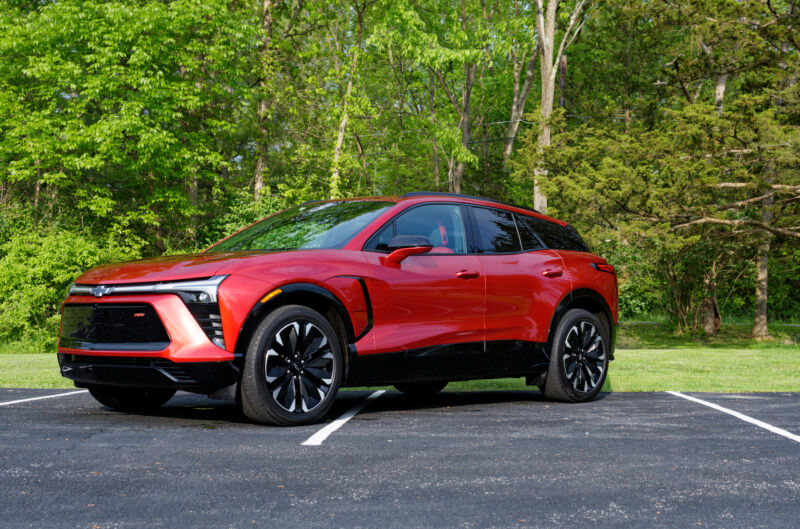
Enlarge / The Chevrolet Blazer was pulled from sale almost immediately after our first drive in December. Now it’s back on sale—with a price cut.
Michael Frank
General Motors appears to have solved the problem that was holding back the production of its Ultium-based electric vehicles. These are now rolling out of factories—you can expect to read about the new Silverado EV tomorrow and the (allegedly affordable) Equinox EV next week, to name but two. We got a first-blush drive of the Blazer this past winter before GM had to put a stop on sales due to some… glitches. Now, with the vehicle back on sale and the software debugged, it’s time to see if the fixes helped.
In reintroducing the Blazer EV and returning it to market, Chevy has also lowered the price pretty significantly, by an average of about $6,000 per model. The LT AWD now starts at $48,800, and there’s a $7,500 incentive for customers who aren’t eligible for the IRS clean vehicle tax credit. The RS AWD, which we tested, has an MSRP of $53,200, but with the delivery charge and GM’s cash on the hood, it came in at $47,095. Both have an 85 kWh battery good for 279 miles (449 km) max range per charge. The longer-range, bigger-battery 102 kWh RS RWD boasts a more impressive 324 miles ( 521 km) per charge and works out to $48,670.
These are pretty competitive prices when you consider the mid-sized EV SUV segment. An obvious comparison: The Ioniq 5 SE AWD costs $49,350 and cannot qualify for the federal tax credit (unless leased), and its range runs shy of the Chevy Blazer RS AWD, too, at 260 miles (418 km) versus the Chevy’s 279.
The Ioniq 5 is a pretty good comparison, too, in terms of being a wagon-ish ride, which is about where the Blazer lands. The Hyundai is too low to think of as an SUV, and ditto the Chevy. Both are very close in terms of interior dimensions, with almost the same hip, shoulder, and legroom front and rear—although if you get the sunroof package on the Blazer, rear seat headroom gets pinched pretty significantly. Our tester didn’t have a sunroof, and six-footers could sit back there without scraping their scalps.

Enlarge / The interior is quite stylized.
Michael Frank
The seats in the Blazer EV are surprisingly good. In fact, it was just a darn fine vehicle in terms of driving comfort, in marked contrast to the models we tested in December. Those cars may have suffered from preproduction glitches, but the Blazer EV RS we just spent a week with is comfortable for both fore and aft passengers over long distances, with about the only demerit that the 21-inch wheels feel as big as they are, so there’s a deadness to the steering. Also, if you’re still cross-shopping that Hyundai, the Ioniq 5 is a significantly lighter car, weighing 4,519 lbs (2,050 kg) vs. 5,337 lbs (2,421 kg) for the Blazer RS, and the driver will feel that weight in the form of sluggish transitions through tight corners. The RS stands for “Rally Sport,” via cars like the Camaro, but this isn’t a rig you want to “rally.”
But that’s fine. The Blazer EV is a family car, and as such, it’s pretty great, with 25.5 cubic feet (722 L) of cargo capacity with the rear seatbacks upright, and 59.1 cubic feet (1,673 L) with them flipped forward. The Ioniq 5 offers a couple of cubic feet more cargo volume than the Blazer EV with the rear seats in use, and with the Ioniq 5’s seats folded, it’s basically a wash.
The Chevy Blazer RS AWD EV delivers 288 hp (212 kW) and 333 lb-ft (451 Nm). This feels plenty muscular, if not “blazing,” with 0–60 mph times reported in the six-second range. However, the Ioniq 5 SE’s 320 hp (239 kW) and 446 lb-ft (605 Nm) make that car quite quick indeed, and right on the heels of the other elephant in the family-car throwdown, the Tesla Model Y.
Driving isn’t the issue—the tech is

Enlarge / The menu structure here feels illogical.
Michael Frank
It’s important to mention the Tesla Model Y because that’s another EV that doesn’t bake in Apple CarPlay or Android Auto. Tesla fans tend not to gripe about this, in part because the software in Teslas is very streamlined and pared back. It’s not lovable, but it’s not hard to pair a phone and play what’s on there. By contrast, one reason GM had to yank the cord on sales of the Blazer was that the car’s software was exceedingly glitchy; this wasn’t about GM switching to its proprietary Ultifi UI but that it wasn’t working. For our test drive week, it worked as promised—just not in a way that argues well for eliminating Android Auto or Apple CarPlay.
When GM went to its Ultifi system and ditched Apple CarPlay and Android Auto, the argument was supposedly in part about driver control and using the vehicle’s native UI vs. Apple’s. But if the native UI is worse than Apple’s, you have a problem. And both Android Auto and CarPlay—which are just constrained versions of their phone UIs—have been refined through testing with billions of consumers over hundreds of millions of combined hours of use. No carmaker can make anything like that claim about their in-house UI. Megacorp tech giants are by no means the answer to our prayers, but there is a reason these platforms have gained so much ground as infotainment structures in our cars and homes.
And you can get an “exhibit A” for why that matters when you try to tee up an audio source when driving the Blazer EV.
A week with the Chevy Blazer EV shows things to love—but also painful flaws Read More »
